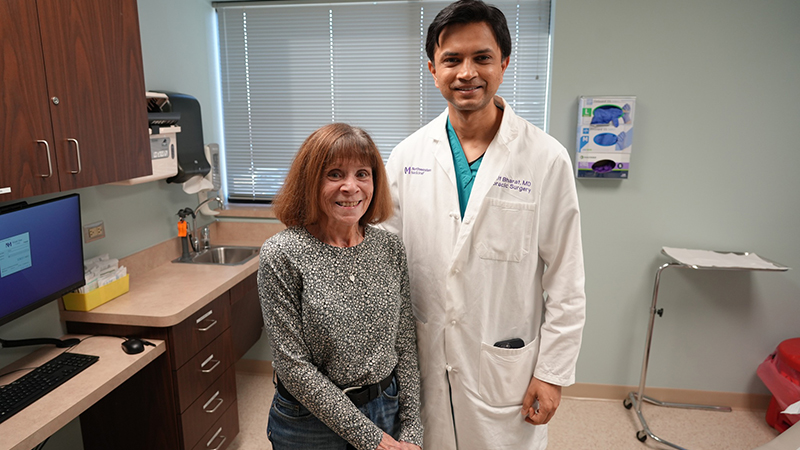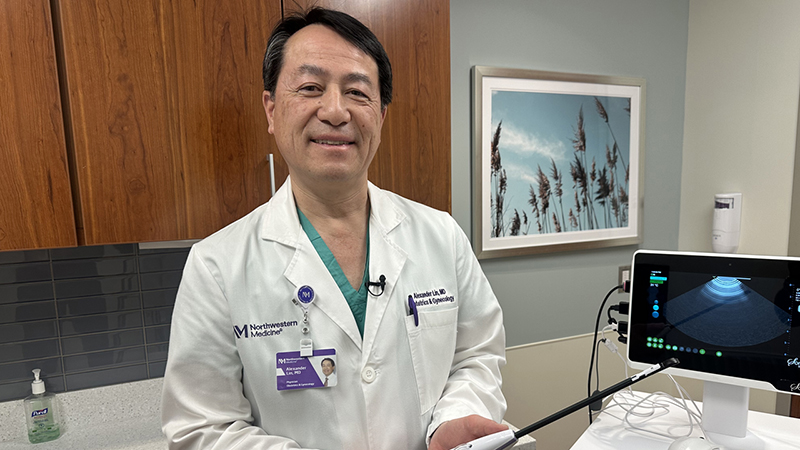Current State of HIV and AIDS Treatment
Advances in Injectable Therapies
Published December 2023
An estimated 1.2 million people in the United States have human immunodeficiency virus (HIV), which can advance into acquired immunodeficiency syndrome (AIDS). Advances in treatments are helping people with HIV live with fewer medications and less intense side effects.
Understanding HIV and AIDS
HIV is typically contracted and spread through anal or vaginal sex, or by sharing syringes. HIV attacks and erodes the immune system, destroying essential cells that help to stave off sickness caused by other viruses or bacteria. If HIV develops into AIDS, these opportunistic infections can become severe.
There is no cure for HIV, but tremendous strides have been made in treatments for people who are infected.
HIV and AIDS Treatments, Then and Now
In the early days of HIV treatment, patients could expect to be prescribed multiple medications for daily use, some of which caused severe side effects. While the search for a cure for HIV and AIDS continues, several medications for treatment now are available that have significantly fewer side effects.
Antiretroviral therapy (ART) is a daily treatment regimen for people who are HIV positive. It includes a combination of medications to get and keep the virus under control. ART reduces the amount of HIV in your body (often referred to as “viral load”), which helps you fight off infections and decreases the risk of transmitting the virus to others. Once HIV is controlled, which typically takes about six months, you may consider long-acting injections with your care team.
Post-exposure prophylaxis (PEP) is a short course of emergency medications that should be taken no more than 72 hours after exposure to HIV to avoid infection. PEP is not the right preventive solution if you are frequently exposed to HIV. If you believe that you have been exposed, seek medical attention immediately.
Although not a treatment, pre-exposure prophylaxis (PrEP) has also been important in reducing the spread of HIV. This preventive medication, taken regularly by pill or injection, can help reduce the possibility of getting HIV from sex or injection drug use.
Progress With Injectable Therapies
Remarkable progress has been made in the research and development of HIV and AIDS treatments, most recently with long-acting injectable therapies. Instead of daily oral medications, injectable therapies can be given monthly or bimonthly, depending on your treatment plan.
“This reduces the number of times patients are taking HIV medication from 365 days a year to six or 12 days a year,” explains Ryan Kates, a pharmacist who specializes in infectious diseases at Northwestern Medicine. “This has the advantage of decreased side effects and improved adherence, and greatly elevates patients' quality of life.”
A long-acting treatment makes a difference physically as well as mentally for patients who have HIV and AIDS. “Many patients have reported that while they understand the need to take a daily medication, each administration of their antiviral brings them back to the trauma associated with their diagnosis,” says Kates. “This new wave of injectable therapy has the potential to greatly reduce this aspect of oral therapy.”
Injectable therapy advances are benefiting people who are HIV positive as well as those who are seeking to prevent HIV because PrEP is also available as a long-acting injection instead of a daily oral medication.
While great strides have been made in treatment, more work needs to be done to ensure all patients have access to effective treatments.
“Currently, the injectable medications for people with HIV are only approved for those who are undetectable, a way of saying that the virus in their system is so low it cannot be detected by a blood test,” explains Kates, who notes that injectable medications can offer relief from “pill fatigue.” “For patients who are undetectable, I would encourage them to talk with their healthcare provider if they are interested in injectable therapy or simplifying their regimen if they are wanting a change from their current medication.”
Best Practices for Pregnant People
Although injectable therapies are not yet available to people who are currently pregnant and living with HIV, pregnant people with HIV do have better medication options today. “Most of the medication options that we use in our non-pregnant patients are exactly the same, which can help put people at ease knowing that they will receive the same care,” says Kates. At the clinic where he works, Kates lets patients with HIV who are pregnant know that it’s never too late to get the help they need and begin a course of medication that is effective and safe.
“I would also reassure a patient who is pregnant that these medications have demonstrated safety in pregnancy with no associated risk to baby,” says Kates. He also says that he encourages patients who are pregnant and living with HIV to adhere to their medication treatment plan. “People who are undetectable have less than a 1% chance of passing the virus to their baby, whereas those who are virally detectable have a considerably higher rate around 15%.”
If you think you might have HIV infection or are interested in preventive medication, contact your physician. You may be referred to an infectious disease specialist who treats HIV and AIDS.





